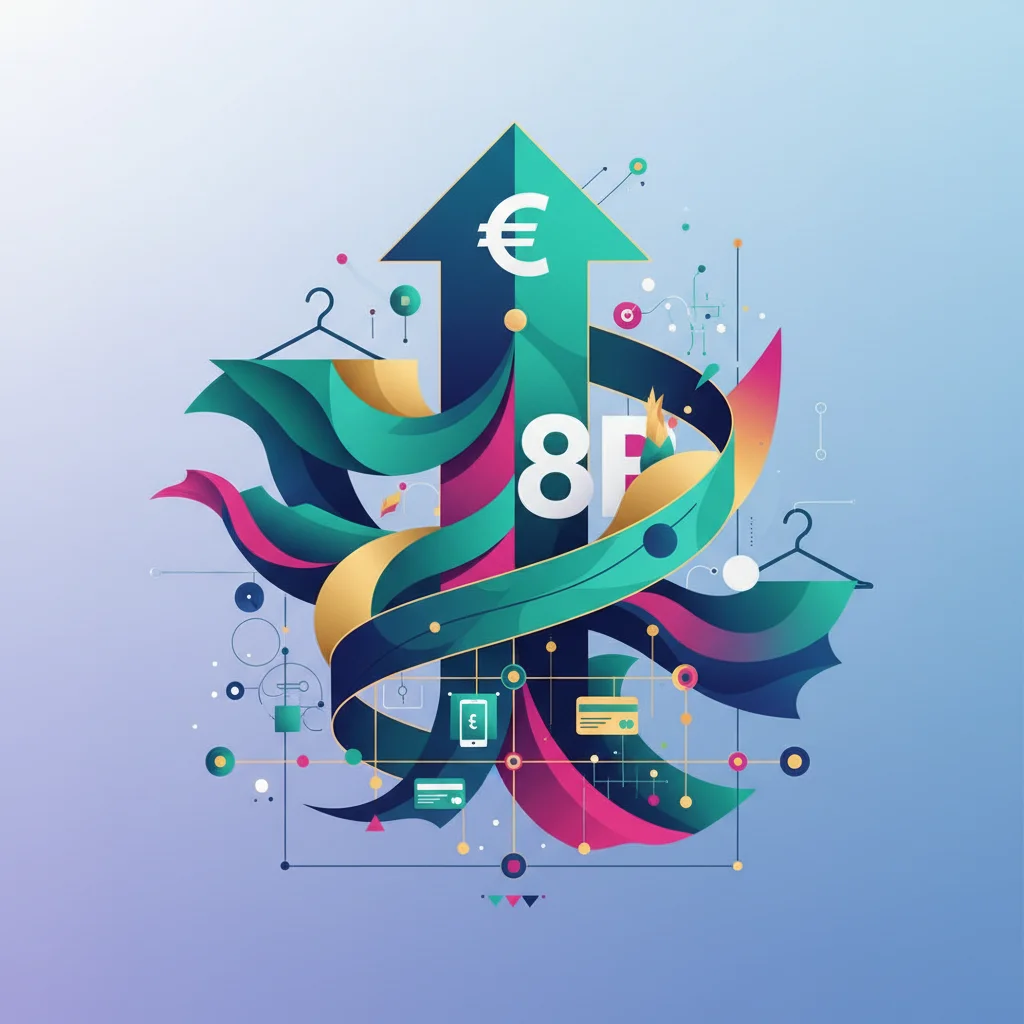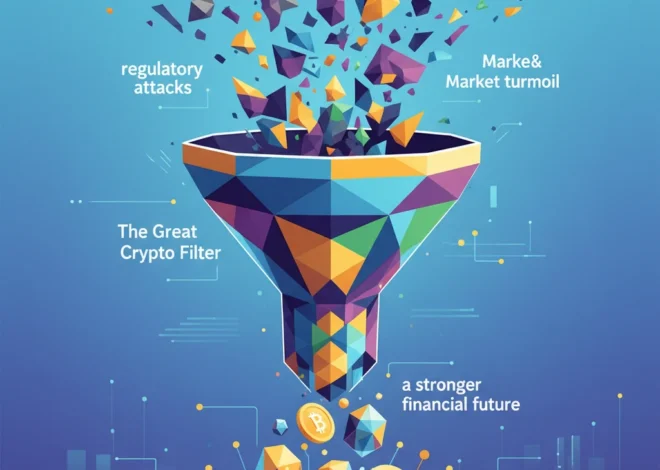
Vinted’s €8 Billion Move: The Fintech-Fueled Rise of Second-Hand Fashion
In the dynamic world of high-growth startups, valuation milestones are more than just numbers—they are powerful signals of market confidence, disruptive potential, and the shifting tides of consumer behavior. The latest signal flare comes from Vinted, the Lithuanian second-hand fashion marketplace, which is reportedly exploring a secondary share sale that could value the company at an impressive €8 billion. This strategic maneuver is not just a testament to Vinted’s meteoric rise but also a fascinating case study in modern finance, the circular economy, and the powerful financial technology that underpins it all.
For investors, business leaders, and anyone tracking the pulse of the global economy, this development offers a rich tapestry of insights. It highlights the maturation of the “re-commerce” sector, provides a window into private market liquidity events, and underscores how sophisticated fintech infrastructure is the true engine of today’s most successful digital platforms. Let’s unravel the threads of this story to understand its broader implications for investing, technology, and the future of commerce.
The Vinted Phenomenon: From Niche Community to E-commerce Juggernaut
To appreciate the significance of an €8 billion valuation, one must first understand the Vinted story. Founded in 2008 in Vilnius, Lithuania, by Milda Mitkute and Justas Janauskas, Vinted started as a local website for friends to trade clothes. Today, it boasts over 80 million registered members across Europe and North America, a testament to its scalable model and its alignment with powerful societal trends.
Vinted’s success is built on a simple yet compelling value proposition: a peer-to-peer (P2P) platform where users can easily buy, sell, and swap pre-loved clothing. Unlike traditional consignment models, Vinted empowers users directly. Sellers list items for free, and buyers pay a “Buyer Protection” fee, which covers secure payments, customer support, and a refund policy. This model has created a highly liquid and engaged marketplace, fueled by two major tailwinds:
- The Rise of the Circular Economy: Consumers, particularly younger generations, are increasingly conscious of sustainability. The fashion industry, notorious for its environmental impact, is ripe for disruption. Vinted provides a tangible solution, extending the life of garments and reducing waste. This shift in consumer economics is a core driver of its growth.
- Economic Pressures and Value-Seeking: In a fluctuating global economy, consumers are more price-sensitive than ever. Vinted offers a dual benefit: sellers can monetize their closets to generate extra income, while buyers can access fashion at a fraction of the retail price.
The platform’s rapid expansion is not just about clothes; it’s about building a robust ecosystem powered by seamless financial technology. From integrated shipping solutions to multi-currency payment processing and dispute resolution, Vinted operates a complex banking and trading infrastructure behind its user-friendly interface.
The Million-Pound Tip-Off: Is the UK Launching a Wall Street-Style War on Tax Fraud?
Decoding the Deal: Why a Secondary Share Sale Matters
The news from Vinted is not about a traditional funding round or an Initial Public Offering (IPO). Instead, the company is exploring a “secondary share sale.” For those in finance, the distinction is crucial; for the general public, it’s an important concept to grasp in the modern investing landscape.
- Primary Issuance: This is when a company creates and sells new shares to raise capital for its own operations (e.g., expansion, R&D). The money goes directly to the company’s balance sheet. This is what happens in a typical venture capital round or an IPO.
- Secondary Sale: This is when existing shareholders (like early investors, founders, or employees) sell their private shares to other investors. The money goes to the selling shareholders, not the company.
The proposed Vinted deal would allow some of its early backers to “take some money off the table” and realize a return on their investment without waiting for a full-blown IPO or acquisition. This is an increasingly common strategy in the private stock market, offering liquidity to long-term stakeholders while the company remains private. For Vinted, it’s a mark of maturity—a way to reward its early champions and clean up its capitalization table, potentially in preparation for a future public listing.
A Look at Vinted’s Valuation Trajectory
The €8 billion figure is particularly striking when viewed in the context of Vinted’s funding history. This demonstrates the exponential growth and increasing investor confidence in its business model and the re-commerce market at large.
| Funding Round Date | Lead Investor | Post-Money Valuation | Source |
|---|---|---|---|
| May 2019 | Lightspeed Venture Partners | €1 Billion | TechCrunch |
| May 2021 | EQT Growth | €3.5 Billion | TechCrunch |
| Late 2024 (Proposed) | N/A (Secondary Sale) | €8 Billion | Financial Times |
This remarkable climb from a €1 billion “unicorn” status to a potential €8 billion valuation in just five years underscores the immense value being created in the intersection of sustainability, e-commerce, and fintech.
The Authenticity Premium: Why the Market's 'Vibe Shift' Is Your Next Big Investment Signal
The Fintech Engine Powering the Circular Economy
At its heart, Vinted is as much a fintech company as it is a fashion marketplace. The seamless experience for its 80 million users is made possible by a sophisticated financial technology stack that manages millions of daily micro-transactions across different countries and currencies. This is where the worlds of banking, trading, and technology converge.
Consider the complexities involved:
- Payment Processing: Vinted must securely handle payments from a multitude of sources (credit cards, digital wallets) across dozens of countries, each with its own regulatory environment.
- Escrow Services: The “Buyer Protection” fee is essentially an escrow service. Vinted holds the buyer’s payment until the item is received and confirmed, mitigating risk for both parties. This builds trust, a critical currency in any P2P marketplace.
- Cross-Border Commerce: A user in Spain selling to a user in Germany involves currency conversion, international shipping logistics, and compliance with different consumer protection laws. Vinted’s platform abstracts this complexity away from the user.
- Dispute Resolution and Anti-Fraud: A robust system is required to manage disputes, handle returns, and prevent fraudulent activity, protecting the integrity of the marketplace.
While not currently a major feature, the principles of transparency and verification in such marketplaces also open the door for future innovations. One could envision a future where luxury goods on re-commerce platforms are authenticated using blockchain technology, creating an immutable digital ledger of an item’s history. This highlights how advanced financial technology is not just an enabler but a key differentiator and value driver for platforms like Vinted.
What This Means for the Broader Market
Vinted’s potential €8 billion secondary sale is not an isolated event; it’s a bellwether for several key trends in finance and economics.
For the **investing community**, it reinforces the immense value in the “picks and shovels” of the new economy. While the fashion items themselves are the goods being traded, the true enterprise value lies in the platform that facilitates this trade securely and at scale. It also demonstrates the viability of the European tech scene to produce global giants capable of competing with Silicon Valley counterparts.
For the **stock market**, it’s a reminder of the vast amount of value being created and exchanged in private markets. As more companies stay private for longer, secondary sales are becoming a critical component of the investment lifecycle, offering a form of liquidity that was once only available through an IPO.
For the broader **economy**, it validates the power of the circular economy as a significant and profitable sector, not just a niche for the environmentally conscious. This has far-reaching implications, from reducing landfill waste to changing consumer relationships with ownership and consumption. The success of companies like Vinted is a strong data point in the field of behavioral economics, showing a fundamental shift in how we value and use goods.
The Great Recalibration: Why the Chief Sustainability Officer Is Pivoting from PR to P&L
Conclusion: A New Chapter in Sustainable Commerce
Vinted’s exploration of an €8 billion share sale is a landmark moment for the company and a telling indicator of broader market dynamics. It’s a story of how a simple idea—swapping clothes—can evolve into a global e-commerce powerhouse when powered by smart technology, aligned with consumer values, and executed with financial acumen.
This move provides a liquidity pathway for early believers, sets a new benchmark for the re-commerce industry, and showcases the sophisticated financial engineering now common in the private tech landscape. As Vinted continues its journey, it serves as a powerful example of how the principles of finance, the innovation of fintech, and the momentum of the circular economy can converge to create immense and sustainable value.


